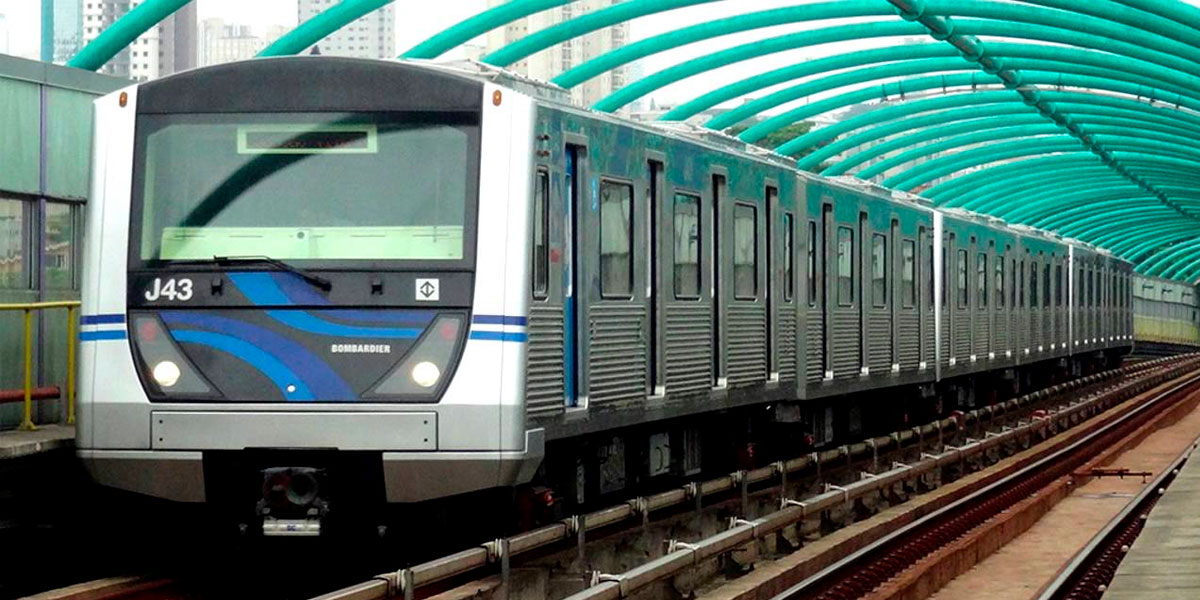RIO DE JANEIRO, BRAZIL – Since the start of the spread of coronavirus in Brazil, Gabriela Mourato only stopped working when she became infected in April.
The young woman, a bank employee, an activity considered essential during the pandemic, spent three days in a hospital after experiencing shortness of breath and then quarantined at home until she recovered. A resident of Embú das Artes, 30 km from the capital, she needs to travel by bus, subway and train to get to work.
“All transportation have been more crowded in the past few weeks, I’m still very scared, even though I’ve already contracted the coronavirus. I don’t know if I’m immune, some people wear masks, others don’t, I feel I’m still taking risks. The company has never offered me an alternative transport, particularly because I am outsourced,” she said as she left the Pinheiros subway station in the western part of São Paulo and headed for the bus terminal, which was relatively empty at 8:30 AM last Wednesday, June 3rd.

Matheus Brito, 24, a resident of the Jardim Ângela neighborhood in the southern part of the city, also feels insecure when taking the train and bus to work. “At the start of the pandemic, I always saw employees sanitizing the buses and subway, greater distancing, but now it is crowded, there is even traffic. It’s like normal times”.
Although demand for public transportation in São Paulo’s metropolitan region fell to one-third of the regular daily volume after governor João Doria decreed isolation measures on March 24th, Gabriela and Matheus’ perception that more and more people are returning to stations and bus stops is true.
According to the State Secretary of Metropolitan Transport, Alexandre Baldy, the number of subway, train and intercity bus lines have been increasing daily. From the end of March to June 3rd, demand increased from two to three million users. Before the pandemic, however, it was ten million. The number tends to grow with the gradual reopening of activities to be implemented this month.
“Last Wednesday we reached 3,053,000, the highest passenger number since the start of quarantine. It’s a 50 percent increase, a substantial rise. And most users are concentrated in peak hours, which is a challenge to avoid crowding,” explains the secretary. To prevent further contamination of the disease, the sanitization of vehicles and stations has been intensified.
In the case of trains, sanitization is done at each end of the line and, in the subway, at the end of each cycle. According to Baldy, the fleet that has been reduced since the start of quarantine currently operates between 65 to 100 percent capacity depending on schedules and demands.
Geraldo Ferreira, a hardware operator on a building project for six months, complains that this reduction has led to crowding in the bus line he needs to use to return home in Osasco, in the metropolitan area. “At the building site we take our temperature, we put on masks, we have hand sanitizers, I feel safe. The problem is when I need to go back. Every day I take a full bus, except on Saturday. It’s the riskiest time. Yet it is better to take a risk than not having a job,” he adds.
The Metropolitan Transport Department claims, however, that the operation is monitored in real time, particularly at rush hours. And when the need for more trains on the lines or buses in the operation is detected, they are immediately included to prevent crowding and the spread of the virus. São Paulo is the record-setting state for cases of the disease in the country, with over 129,000 notifications and 8,560 deaths from coronavirus by Thursday, June 4th.
Time scheduling
With the impending opening of offices, shopping malls, some stores, car dealers and real estate agents in the next few days in the capital – which will be approved after protocols -, secretary Alexandre Baudy, states that the transport operation will require a full return. However, he supports a scheduling of opening and closing hours for each business activity, in order to decrease the number of users at rush hour (from 5:30 AM to 7:30 AM and from 5:30 PM to 7:30 PM).
“People need to come and go from work at alternate times so that we can smooth out the rush hour. Instead of concentrating users in a 2-hour interval we can extend it to six hours. This is the only formula that is working in other countries that are currently reopening, like China. For instance, a mall can open from 1 to 8 PM, allowing its employees to avoid the busiest times in public transports,” says the secretary. “Mass transportation is inherently a crowding of people,” he adds.
The decision on the opening hours of commercial establishments is up to each municipality. “This is why I have formally notified all the municipalities we serve (134) that this procedure is crucial to prevent crowding two hours a day. We are involved in the reopening debates so we can be prepared”, he explains.
On Thursday, the Mayor of São Paulo, Bruno Covas, said that accredited automobile dealerships and used car dealers, in addition to service business, could restart operations from Friday, June 5th, provided that the opening and closing hours do not coincide with the city’s peak hours. The sectors will be authorized to serve the public for four hours a day.
Covas also explained that the bus fleet will be reinforced with 2,000 vehicles “to prevent crowds” in public transports as more sectors reopen their activities to the public. Since early May, an average of 1.1 million people have used municipal buses, also in the first days of June, 33 percent of the normal daily volume before the pandemic, according to SPTrans.
The operational fleet remains at 65.5 percent capacity (8,394 vehicles). Before quarantine, the bus system in the capital carried approximately 3.3 million people on working days.
Source: El País

